FRESH STREET #5 Subverting the rational – A rebellious rise of UK Outdoor Arts and Contemporary Circus
The emergence of Welfare State International in 1968 very much set the course for UK Outdoor Arts and Contemporary Circus, and the Artist’s Manifesto as outlined by its founding Artistic Director John Fox captures the core principles of our sectors:
“If Art is […] recognised as a mode of knowledge, an intuitive and lateral way of being that subverts the rational, […] an artist would become a facilitator, a celebrant, […] a visionary linking the past and the future, […] a revelator of layers of perception, and the holder of what used to be called spiritual energy. […] This kind of artist would acknowledge the artist in us all and offer testament to the innate creativity recurring in every generation and every community. ”1
For John and his Welfare State colleagues, artmaking was always about being with and of the community. To them, artistic excellence wasn’t only found in what was presented to the audience. It also lay in how communities participated in the design and construction of the work, and in the new meaning this process revealed about each place, its people, and the occasion. Welfare State’s community-focused arts practice began life in the late 60s with a radical removal of the arts from elitist cultural buildings. For John Fox and his peers, the streets were the best place to experiment how artmaking can become relevant to the wider public, and their early experimentation enabled them to organise some big events decades later. "The Raising of the Titanic" (1983), “False Creek” (1986), and the lantern festival for Glasgow City of Culture (1990) are great examples of Welfare State’s intricate blending of high-quality art with social impact. Terms like ‘placemaking’, ‘co-creation’, ‘inclusivity’, and ‘relevance’ are regularly used in UK arts policy today, but Welfare State had perfectly integrated these into their community-focused arts practice by the 80s. Their deep-rooted influence within UK Outdoor Arts and Contemporary Circus means these core principles are still very much alive in our sectors today.
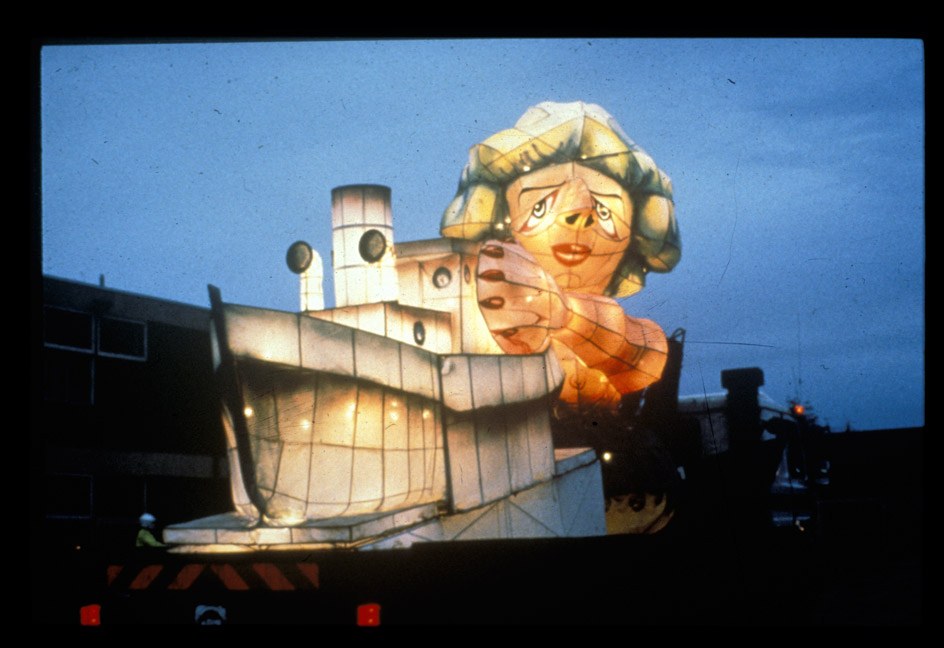
The acceptance and the profile of UK Outdoor Arts and Contemporary Circus began to grow in the 70s and gained momentum in the 80s. This is reflected by the emergence and development of numerous touring companies. For example, Desperate Men began its life in 1980, Whalley Range All Stars in 1982, No Fit State Circus in 1986, Avanti in 1987, and Artizani in 1989. Circus education also took a foothold in the UK arts scene with Fool Time starting in Bristol in 1986 with Circomedia stepping into their shoes upon its closure in 1993.
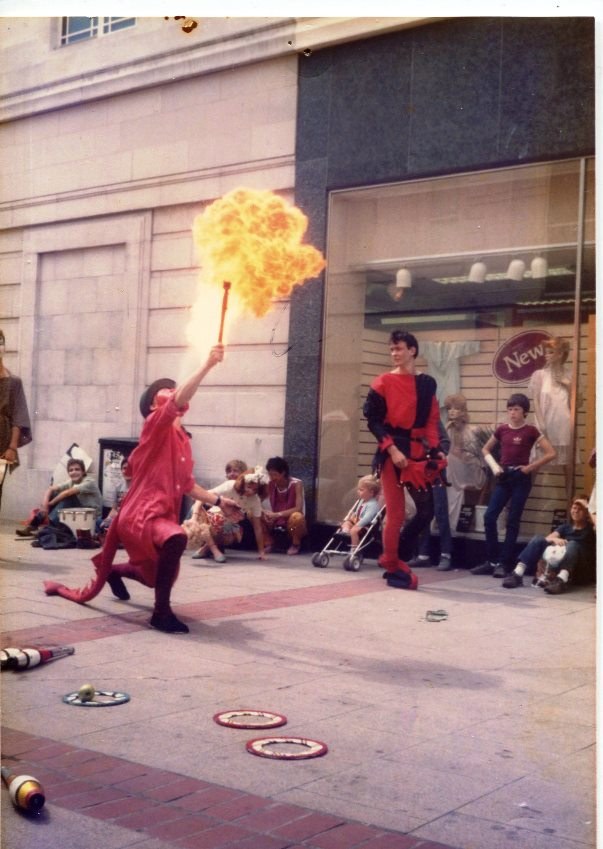
Although the 80s saw the sectors grow in the UK, the country was in a testing period. Thatcherism was changing the fabric of British society, and social upheaval was playing out in public spaces across the country. The public’s want of ‘subverting the rational’ to find new meaning was heightened, and many of these companies responded. They created rebellious work often infusing playfulness of British absurdism, always making it accessible, relevant, and level with the public. They were well poised to say the unsayable in the most open and public of spaces.
The stature of our sector continued to grow in the late 80s and into the 90s, which is marked by the increase in the number of festivals. A mainstay of UK Festivals, Stockton International Riverside Festival for example began in 1988 and quickly remodelled itself in line with its counterparts in Holland, France, and Spain. It sustains its focus on presenting international companies to this day. Organisations like Manchester International Arts and Zap Art also began presenting national and international work in the late 80s. The early and mid 90s saw the emergence of many stalwart Outdoor Arts festivals we have today, thanks to increasing support from Local Authorities and the National Arts Councils. Jonathan Kay, the founding Artistic Director of the UK’s longest running festival Hat Fair, acknowledges that the festival finally found stability 20 years after starting out as a busking festival in 1974. Some of these festivals in England went on to form Without Walls Consortium in 2007, pooling their resources together for joint commissioning and touring of new work.
An Aesthetic of Diversity
The mid 90s and the early 2000s are often touted as the Golden Age for UK arts, when the New Labour Government began making substantial investment into the arts. UK Outdoor Arts and Circus were beneficiaries of this, and 2005 marked further increase of public interest in our sectors. This is because London won the right to host the 2012 Olympic and Paralympic Games on the promise of animating every corner of the country through sport and culture. It opened the door for focused investment; Arts Council England for example, revised its portfolio of core funded organisations in 2008 and chose to back organisations in Outdoor Arts and Contemporary Circus.
D/deaf, disabled and Global Majority artists became key players too because diversity was another key promise of London 2012. To highlight the UK being the birthplace of the Paralympic Movement, they pledged to put the Olympic and Paralympic Games on equal footing. They also made clear that the Games will showcase and engage with the full spectrum of ethnic diversity of the UK. The UK arts scene was already familiar with Black-led events such as Afrocarribean Carnivals and South Asian Mela, and the renewed investment into Outdoor Arts, Contemporary Circus and diverse artists saw circus groups like the disabled-led Extraordinary Bodies and Black-led Upswing emerge and grow. Outdoor Arts welcomed disabled-led groups such as Stopgap Dance Company, and numerous Black and South Asian Dance and Theatre groups entered the sector.
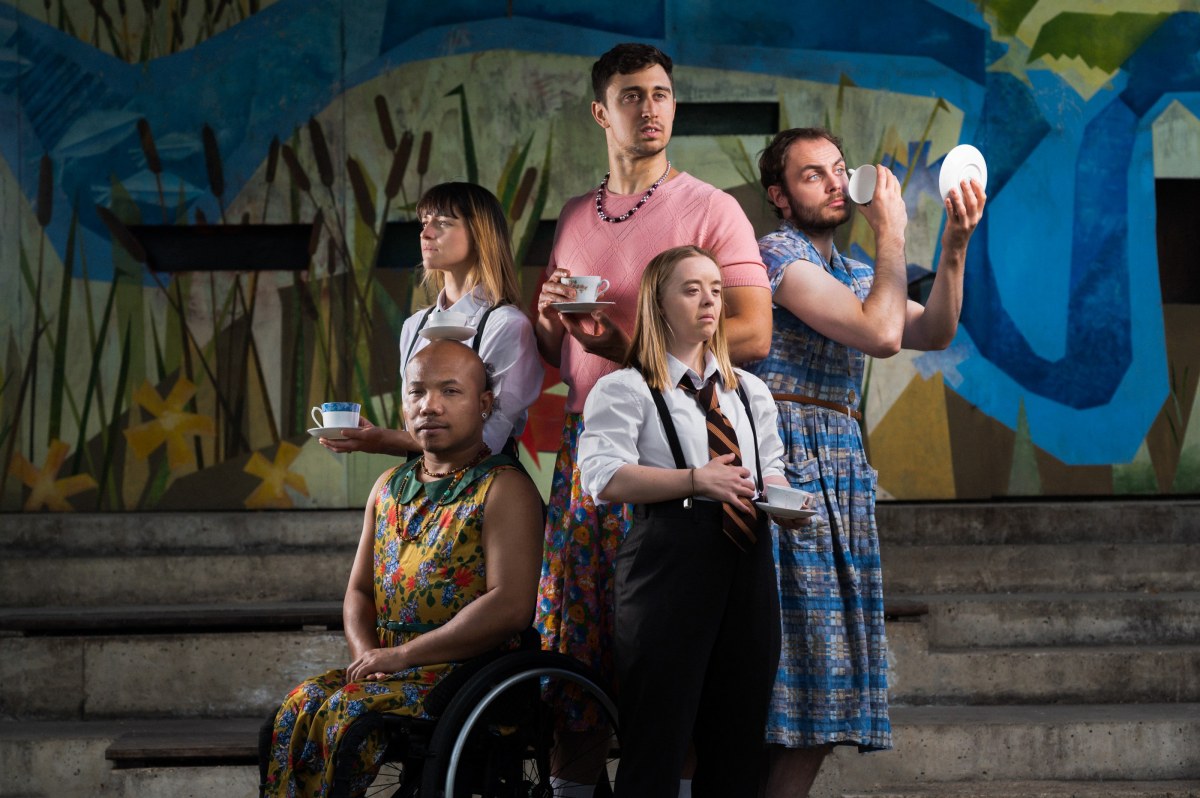
The policy focus on diversity encouraged UK creatives with different backgrounds and lived experience to collaborate, and this supported the country’s arts industry to develop an aesthetic of diversity. It achieved a vibrant range of creative innovation through fusing of differences, and the arts mobilising the full spectrum of the UK's diverse population became more of a possibility as a result. This eventually manifested in Arts Council England’s Creative Case for Diversity in 2011 2. This policy ensured focus on: Removing barriers to the arts for minoritised communities; recognising the unique contribution they make to the industry; and renewing the framework used to view diversity. By breaking away from the deficit model, in which minoritised communities are seen as ‘lacking’ or ‘inferior’, diversity became established as a source of innovation and vibrancy. In short, the framework of “diversity OR artistic excellence” was replaced by “diversity AND artistic excellence”.
2012 Opening Ceremonies were vehicles to showcase the power of diversity to the world, and the Paralympics leaned particularly on the sectors of Outdoor Arts and Contemporary Circus. Bradley Hemmings from Greenwich+Docklands International Festival (GDIF) and Jenny Sealey from Graeae Theatre orchestrated an unforgettable Opening Ceremony. They also involved disabled Outdoor Arts performers Nichola Miles-Wildin play the central character alongside Sir Ian McKellen, and the late David Tool took to the skies after an emotive solo dance performance to a song by Birdy. 2012 is still the only Paralympic Ceremony that involved a vast team of disabled creatives with a disabled Artistic Director at the heart of it. Together, they told the story of D/deaf and disabled people from their perspective with sincerity and power.

The Ceremonies also had a specific impact on the development of Outdoor Arts and Circus sectors in the UK. We received intensive support to increase the number and the diversity of acrobats, dancers, and musicians who could fill the enormous London Stadium. A good example of this is the speed at which a large group of disabled people received training in aerial and spectacle work, with Graeae Theatre’s “Prometheus Awake” at GDIF acting as a step for many of these performers to take to the Opening Ceremony. The technology and new harness system they developed for disabled aerialists had a profound effect in making the artform more accessible.
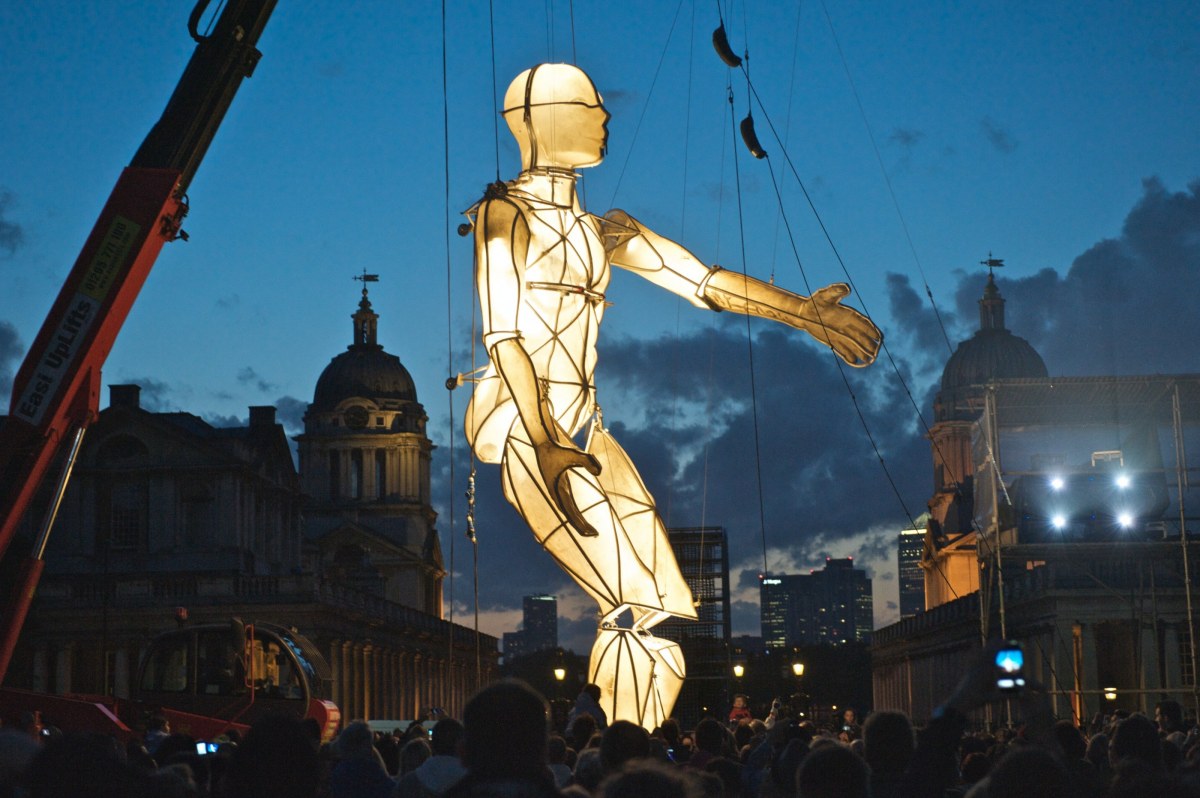
The success of 2012 turned diversity into a Unique Selling Point (USP) for the UK arts industry, and the National Arts Councils, Department for Culture Media and Sport, the Government, and the British Council have all used this USP as soft power on international platforms. It was encouraging to see their key message that D/deaf, disabled and Global Majority talent can step up, but they require long-term support and equal societal standing.
A perilous future and the importance of standing our ground
The growth of UK Outdoor Arts and Contemporary Circus might sound like a great success story, but the sectors’ need to stay true to our core principles were increasingly tested throughout. This tension is particularly heightened in the UK today.
The economisation and instrumentalisation of the arts, which began in the 80s and 90s, gained momentum in the 2000s and became turbo charged in 2010 under the then Conservative Government. In the backdrop of the 2008 financial crash, the arts faced increased pressure to demonstrate what return we were showing for public investment. The emphasis on economic impact assessments thus increased, and we were told to fundraise from philanthropists to deal with funding cuts. This gave advantage to cultural institutions with bigger staff teams, and the implementation of McMaster Review of the Arts 3 brought even more imbalance. The Review placed ‘artistic excellence’ at the heart of decision-making but said that the measurement of quality should be done through ‘Self-Assessment’. When allowed to mark their own homework, these bigger institutions with political leverage weighed in on the Government to promote elitism in the arts.
The arguments surrounding what art is, and what it should do, led to casualties with several community-focused companies folding. Welfare State itself ceased operations in 2006. This debate around art has got louder again more recently as the economic landscape worsened: Everyone is running-on-empty after a decade plus of austerity, post-pandemic hangover, Brexit, and the wars in Ukraine and Gaza amongst many other conflicts. The bigger political players will continue to have a bigger voice than Outdoor Arts and Contemporary Circus, but revisiting John Fox’s Manifesto can give our sectors hope.
In his Manifesto speech of 2013, John Fox went on to say, “re-generation is for the soul and not of economics”, beckoning us to stay true to our vision of Art and rise above the noise of arts elites and instrumentalists. There’s also a good reason to do this right now.
The vision statement of Arts Council England’s 10-year strategy Let’s Create (2020) says: “By 2030, we want England to be a country in which the creativity of each of us is valued and given the chance to flourish, and where every one of us has access to a remarkable range of high-quality cultural experiences." 4
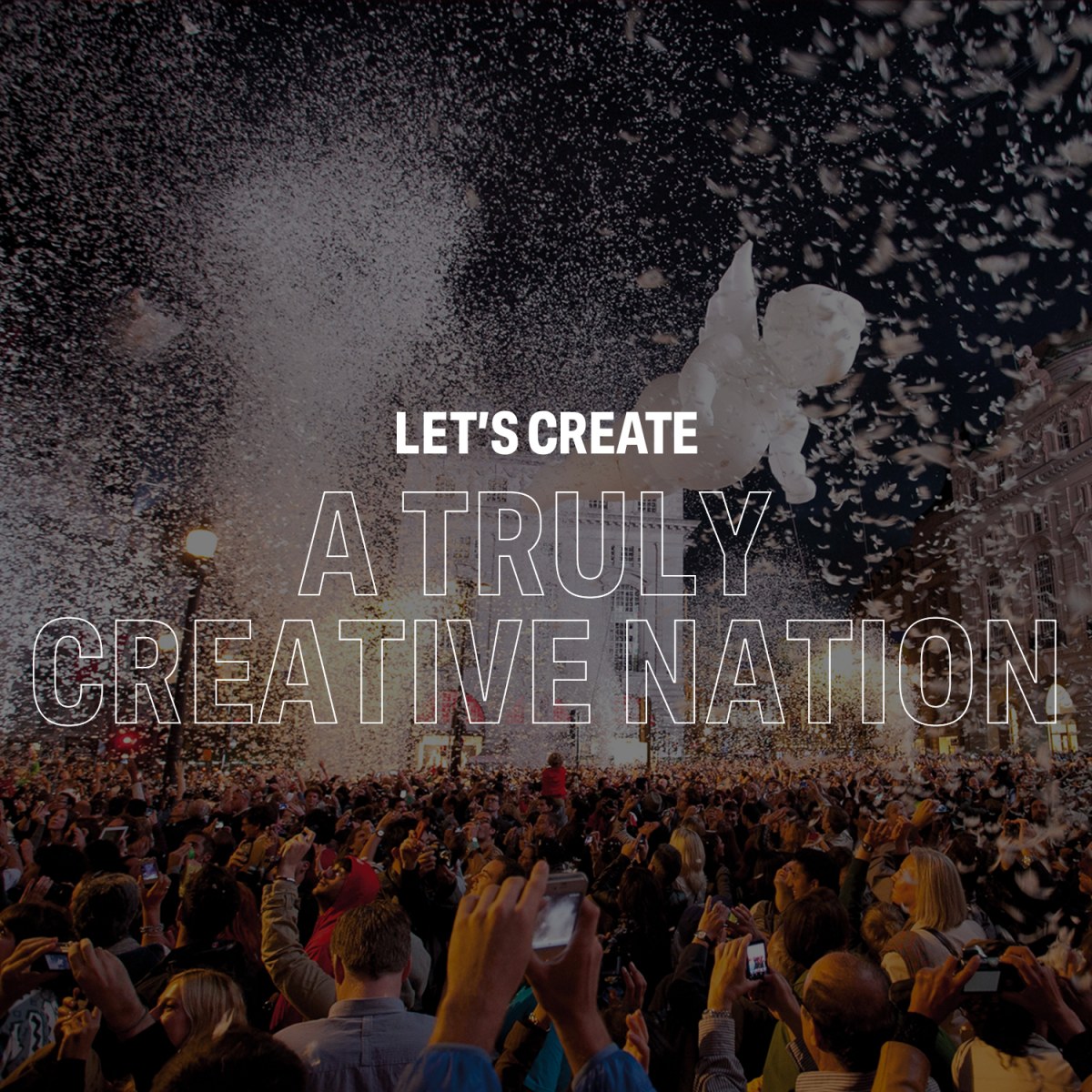
The core to this vision is artists doing Art as John Fox understood it, and “Let’s Create” goes on to recognise that excellent art can make people and communities happier, healthier and wealthier when it is done WITH them, not TO them. Access and Excellence are not binary, and the other National Arts Councils have taken up a similar outlook.
The sustained economic uncertainty is motivating the arts elites to speak louder against these policies that aim to level the playing field, and the policymakers’ resolve are being tested. Despite this turbulence, UK Outdoor Arts and Contemporary Circus can maintain our edge within the current policy landscape if we stay true to John Fox’s Manifesto. It makes sense to hold our nerve, and act as one to get fair recognition against some strong headwind.
1: https://arestlessart.com/wp-content/uploads/2016/03/john-fox-a-new-role-for-the-artist.pdf
John Fox sadly passed away in March 2025, and his obituary is available to view on The Guardian: https://www.theguardian.com/stage/2025/apr/08/john-fox-obituary
2: https://arestlessart.com/wp-content/uploads/2016/03/john-fox-a-new-role-for-the-artist.pdf
4: https://www.artscouncil.org.uk/lets-create

Sho moved to the UK in 1995 and graduated from LSE in 2005. After working at Arts Council England, he joined Stopgap Dance Company in 2008, helping it become a leader in inclusive dance. In 2024, he became Director of OutdoorArtsUK and is also on Arts Council England’s Area Council.



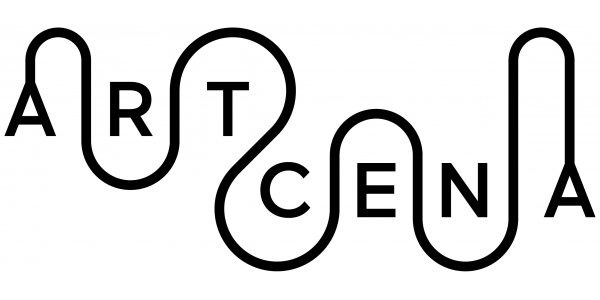

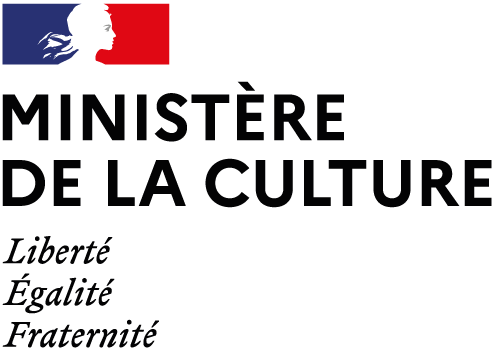
écrivez-nous : infocircostrada@artcena.fr